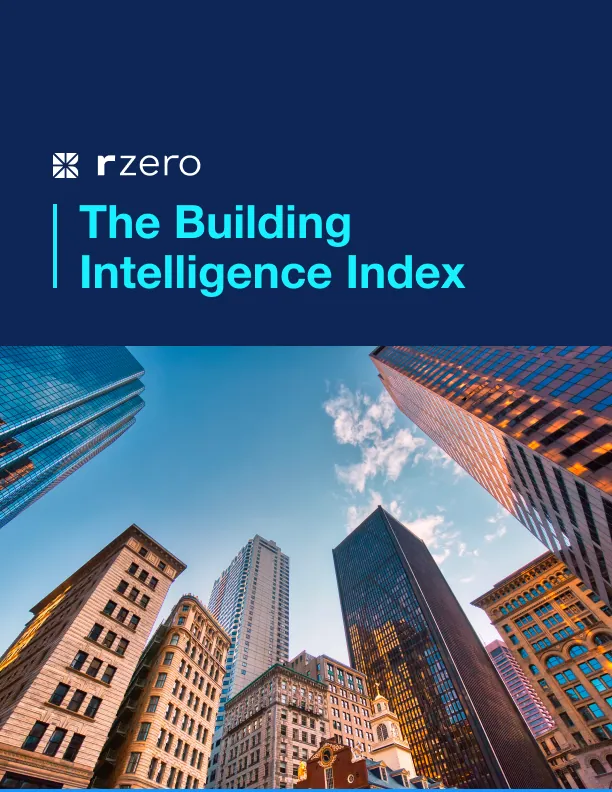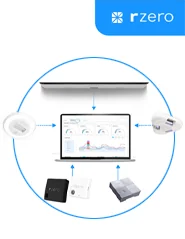
The Energy Efficiency FAQ: Clear Answers to Common Questions About Smarter Buildings
When people first learn about R-Zero’s platform, they often have smart, valid questions, and a few common concerns. Some are based on past experiences with other systems. Others come from how building operations used to work.
This FAQ is here to give you clear, straightforward answers. Just helpful context on how R-Zero fits into your building, your goals, and your team’s workflow.
Here are Common Objections and What to Say Back
“We don’t want to give you BMS write access.”
→ “We don’t need it.”
Why it works: R-Zero integrates without requiring BMS write access. Many orgs prefer read-only for safety, and we can operate that way while still driving major HVAC runtime savings. We post occupancy data by zone to BACnet and work with your controls vendor to program the BMS to respond to that information, with an existing sequence or a tailored one we jointly recommend with them.
“We already did CO₂ DCV.”
→ “This reacts instantly and stops waste after people leave. It’s also more accurate and less expensive to implement.”
Why it works: Traditional DCV ramps slowly and assumes occupancy. Our approach confirms actual presence, ending runtime 30+ minutes sooner, which turns into hundreds of hours saved per month.
“This doesn’t help us with ESG.”
→ “It lowers Scope 1/2 emissions. IAQ monitoring helps with WELL, LEED, and similar certifications as well.”
Why it works: Real-time occupancy cuts direct emissions from boilers (Scope 1) and electricity load (Scope 2).
“This feels like a nice-to-have, not a must-have.”
→ “Your HVAC is likely running for hours when no one’s there, that’s burning budget and carbon daily.”
Why it works: Reframe it from ‘new tech’ to ‘found money.’ Everyone’s looking for budget-neutral savings. This is the rare tool that pays itself off immediately, especially with an EaaS contract.
“Our team’s focused on electrification, not HVAC control.”
→ “This makes electrification actually work without runtime control, you’re just shifting costs.”
Why it works: Electrification without optimization often increases peak load and runtime. R-Zero reduces the baseline so upgrades don’t backfire.
“We already have badge swipes.”
→ “Those don’t reflect how people actually use space and they can’t shut off HVAC when a meeting ends early.”
Why it works: Badge data ≠ real-time occupancy. R-Zero gives room-level, moment-by-moment insight to act immediately, not on assumptions.
“This isn’t in our current budget.”
→ “No problem, that’s true for most orgs. That’s why we’ve created an Efficiency as a Service structure that pays for the project entirely out of verified savings, so all you see is improved building performance and lower utility bills.”
“How does this differ from demand response?”
→ “Demand response kicks in a few times a year. R-Zero optimizes every day, cutting waste across thousands of low-use hours. Of course, you should still participate in DR programs that work for you!”
Why it works: It reframes R-Zero as proactive, everyday efficiency, complementing DR, not competing with it while proving consistent ROI.
“How do we know this won’t disrupt comfort or IAQ?”
→ “We monitor temperature, and humidity in real time, plus other IAQ metrics like CO2, Particulate Matter, and VOCs, to ensure there is no negative impact to people in the building and assure you that our system is working as intended.”
Why it works: It reassures teams that comfort and IAQ stay protected, not compromised. Referencing trusted standards eases concerns and builds credibility.
“We need our facilities team to buy in.”
→ “Of course. We’d love to show them how working with R-Zero can save them time on HVAC repairs when the system is under strain and reduce distracting tenant complaints.”
Why it works: It reframes R-Zero as a tool that supports, not burdens, facilities teams, offering clarity, not complexity. Social proof from similar orgs builds trust.
“We’re doing a major controls upgrade already.”
→ “Smart move. R-Zero adds real-time occupancy data to make those new controls work even better, and IAQ monitoring to ensure your upgrade it’s working as intended, not just installed.”
Why it works: It avoids overlap by showing R-Zero enhances, not replaces, their investment. Most BMS upgrades still run on static schedules—R-Zero adds the real-time insight they often lack.
More posts you might like
-

How to Pilot SecureAire Filters
A Step-by-Step Guide for Facilities Teams Cut HVAC energy use, extend filter life, and improve indoor air quality—without disrupting operations. Piloting R-Zero’s SecureAire filters is a smart move for facilities teams seeking to enhance HVAC performance and air quality while achieving energy savings. This guide walks you through how to plan and execute a data-driven […]
-

Smarter ventilation, lower cost: a guide to reducing HVAC energy without disruption
This guide is for energy leads and operations teams evaluating R-Zero. It outlines how our platform delivers measurable HVAC energy savings—not through expensive capital upgrades or disruptive equipment replacements, but by intelligently reducing airflow where it’s not needed and improving the efficiency of air movement through smarter filtration. Static schedules vs CO₂ vs occupancy-driven control […]
-

Why Air Quality Sensor Placement Matters
Whatever your reason for installing indoor air quality sensors — whether you’re focused on improving or proving air quality, or validating HVAC energy savings or filter upgrades — IAQ sensors are only as useful as where you place them. The right positioning ensures you’re capturing meaningful, occupant-relevant data, not just system metrics. This helps: Even […]

